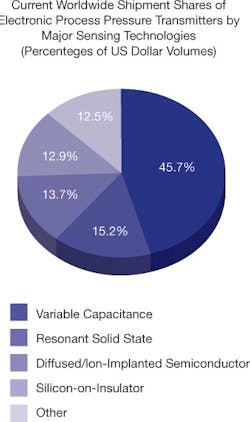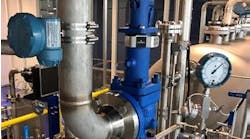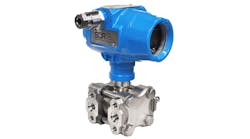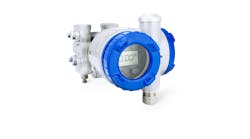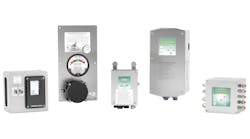This article was printed in CONTROL's May 2009 edition.
Electronic pressure-sensing devices that employed variable-capacitance sensing technology continue to dominate process applications.
Figure 2. Variable-capacitance sensing technology captured 45.7% of the electronic pressure-sensing device market in 2008.
(Courtesy of VDC Research Group)
According to recent research from VDC Research Group, in 2008, 45.7% of electronic pressure-sensing devices were of variable-capacitance sensing technology, and this percentage share is expected to continue to grow steadily at a rate of 2.6% per year through 2013.
“Electronic pressure transmitters and transducers that operate on variable-capacitance sensing technology use relatively little current, which make these ideally suited for battery-powered operations,” the study notes.
Resonant solid state, silicon-on-insulator and diffused/ion-implanted piezoresistive-sensing technologies were also widely implemented in 2008 and are forecast to account for a major share of the worldwide electronic pressure transmitter market in 2013.
“Along with pressure range and sensitivity, common criteria considered important during sensor selection for a given application are physical size, cost, accuracy, temperature performance, reliability, long-term stability, and media compatibility,” added VDC Research’s Tim Shea.

